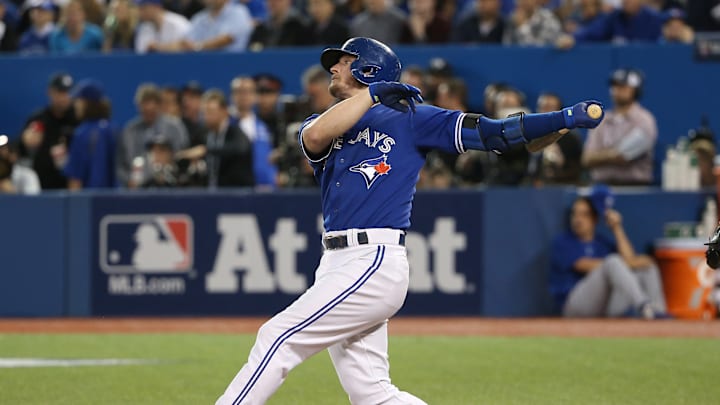No. 1 Josh Donaldson
In April 2010, a 24-year-old prospect made his Major League debut as a catcher with the Oakland Athletics against the Blue Jays at the Rogers Centre, striking out in his only at-bat. Nearly five years later, Josh Donaldson returned to Toronto, this time as a member of the Blue Jays and an MVP-caliber third baseman.
General Manager Alex Anthopoulos had to give up homegrown hero Brett Lawrie in a package to pry Donaldson away from the Athletics, but it proved to be worth it. The Blue Jays in 2015, with Donaldson in the middle of their lineup, became an offensive powerhouse.
“I definitely think the elements are there to win,” Donaldson said at the time of the trade that sent him to the Blue Jays. “You start looking at the capability of this lineup and the potential that it brings. I’m going to venture to say there’s probably not going to be another lineup as potent as this in Major League Baseball.”
He turned out to be right. The Blue Jays scored 130 more runs than any other team and led MLB in homers and OPS by more than 40 points. Donaldson hit 41 home runs, tying Tony Batista for the most ever by a Blue Jays third baseman. His 123 RBI was a new franchise record at the position.
Donaldson’s .939 OPS in 2015 was more than 60 points higher than any other Blue Jays third baseman had recorded in a season and stood as a franchise record until the following season when he had a .953 OPS. He beat out Mike Trout for AL MVP, becoming only the second player in franchise history to win the award after George Bell in 1987. He followed up his MVP season with 37 more homers in 2016, the first third baseman to reach that number in consecutive years and only the third player overall in franchise history.
Donaldson’s Blue Jays won 93 games in 2015 and made it all the way to the ALCS in their first postseason appearance in 22 years. They got back there the next year, Donaldson’s hustle rounding third base on a groundball scoring the winning run in the clinching game of the ALDS. Postseason baseball, after decades of futility, had returned to Toronto, and Donaldson was right in the middle of it.
Donaldson was traded to the Cleveland Indians, bringing an end to his four-plus years in Toronto. He finished as the franchise leader in home runs by a third baseman with 116 despite playing half the number of games as Kelly Gruber and more than 400 fewer than Ed Sprague; he trails only Gruber and Sprague in RBI. His career OPS in Toronto is nearly 80 points higher than any other third baseman in franchise history.
It’s no wonder the team honored him with a tribute video and rousing ovation when he made his return to the Rogers Centre in 2019, this time as a member of the Atlanta Braves. It was recognition of an indisputable fact: Donaldson was the greatest third baseman in franchise history.
